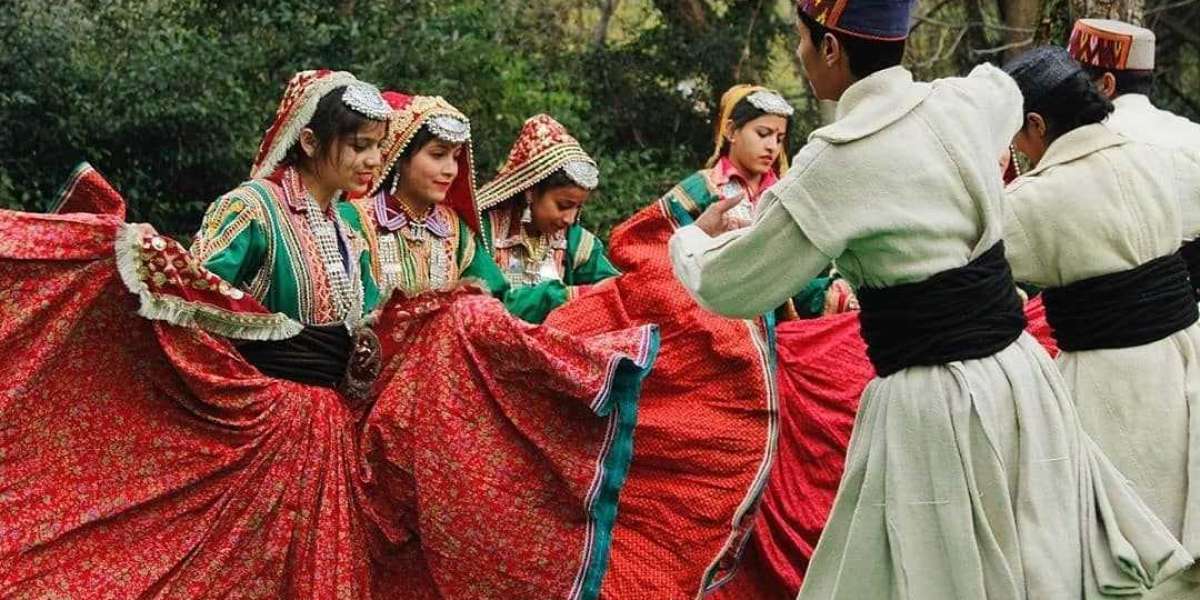Introduction:
Himachal Pradesh, nestled in the lap of the Himalayas, is not just renowned for its breathtaking landscapes and serene ambiance but also for its rich cultural heritage. One of the most captivating aspects of this cultural tapestry is its traditional dances, deeply rooted in religious fervor and spiritual significance. In this article, we delve into the vibrant world of Himachali religious dances, exploring their history, significance, and enduring influence on the region's cultural landscape.
The Cultural Tapestry of Himachal Pradesh:
Himachal Pradesh, often referred to as the "Land of Gods," boasts a diverse cultural mosaic shaped by its unique geography and centuries-old traditions. The state is home to a myriad of ethnic communities, each contributing its distinct customs, rituals, and art forms to the cultural tapestry of the region. Among these, traditional dances hold a special place, serving as a vibrant expression of faith, joy, and communal harmony.
The Significance of Himachali Religious Dances:
Himachali religious dances, deeply intertwined with the spiritual beliefs of the local communities, play a pivotal role in various religious ceremonies, festivals, and social gatherings. These dances are not merely artistic performances but sacred rituals performed to invoke blessings from the deities, commemorate historical events, or celebrate the rhythms of life in harmony with nature.
Exploring the Diversity of Himachali Religious Dances:
The diverse topography and cultural heterogeneity of Himachal Pradesh have given rise to a rich tapestry of religious dances, each unique to the traditions and beliefs of the communities that perform them. From the exuberant rhythms of the Nati dance of Kullu to the graceful movements of the Chamba folk dances, Himachal Pradesh offers a fascinating array of dance forms that reflect the cultural ethos of the region.
Nati: The Dance of Joy and Celebration:
Nati, the quintessential folk dance of Himachal Pradesh, is synonymous with joy, celebration, and community spirit. It, originating from the Kullu Valley, showcases lively footwork, rhythmic hand movements, and colorful attire adorned with intricate embroidery. Performances of Nati, accompanied by traditional musical instruments like the dhol and nagara, capture the essence of Himachali culture and grace weddings, festivals, and other auspicious occasions.
Chamba Folk Dances: Elegance in Motion:
Chamba, nestled in the picturesque valleys of Himachal Pradesh, has earned renown for its graceful folk dances that vividly showcase the region's rich artistic heritage. The Chamba dances, such as the Gaddi, Gujjar, and Swang Tegi, feature fluid movements, intricate choreography, and soul-stirring music. These dances often depict mythical narratives, historical events, or agricultural rituals, serving as a cultural repository of the region's collective memory.
Shivratri Festival: A Celebration of Devotion and Dance:
Shivratri, one of the most revered festivals in Himachal Pradesh, is celebrated with great fervor and enthusiasm across the state. Apart from religious rituals and ceremonies, Shivratri also provides an opportunity for devotees to express their reverence through traditional dances. The Shivratri fair in Mandi is particularly famous for its vibrant dance performances, where artists from different parts of the state showcase their talent and devotion through mesmerizing performances.
Preserving Heritage: Challenges and Opportunities:
While Himachal Pradesh's traditional dances continue to thrive as an integral part of its cultural heritage, they also face challenges in the wake of modernization, urbanization, and changing social dynamics. The need to preserve and promote these age-old traditions has never been more pressing. Initiatives such as cultural festivals, dance workshops, and documentation projects play a crucial role in safeguarding the legacy of Himachali religious dances for future generations.
Conclusion:
In the rhythmic cadence of Himachali religious dances, we find a profound expression of faith, community, and cultural identity. From the spirited Nati of Kullu to the elegant Chamba folk dances, each performance embodies the rich tapestry of traditions that define the cultural landscape of Himachal Pradesh. As we celebrate these dances and the stories they tell, let us also recognize the importance of preserving this invaluable heritage for generations to come. Additionally, ensuring that the rhythms of devotion continue to resonate through the hills and valleys of this enchanting land is paramount. Moreover, it is imperative to understand the significance of safeguarding these traditions. Furthermore, the cultural legacy embedded in these dances must be cherished and protected.
In addition, efforts should be made to pass down these ancient art forms to future generations. Equally important is the need to foster a deeper appreciation for Himachal Pradesh's cultural richness. Likewise, promoting awareness about the importance of cultural preservation is essential. Similarly, initiatives aimed at preserving these dances should be encouraged. Moreover, collaborative efforts from various stakeholders are crucial in this endeavor. Furthermore, embracing the heritage of Himachali religious dances is vital for cultural sustainability. Likewise, recognizing the role of these dances in shaping collective identity is indispensable.
Furthermore, acknowledging the spiritual significance of these traditions is essential. Moreover, fostering a sense of pride in these cultural expressions is key. Additionally, integrating traditional dances into educational curricula can help in their preservation. Moreover, documenting the history and significance of these dances is imperative. Additionally, creating platforms for artists to showcase their talent is crucial. Furthermore, supporting cultural institutions dedicated to preserving these traditions is essential. Moreover, leveraging technology for the dissemination of traditional dance forms can be beneficial.








